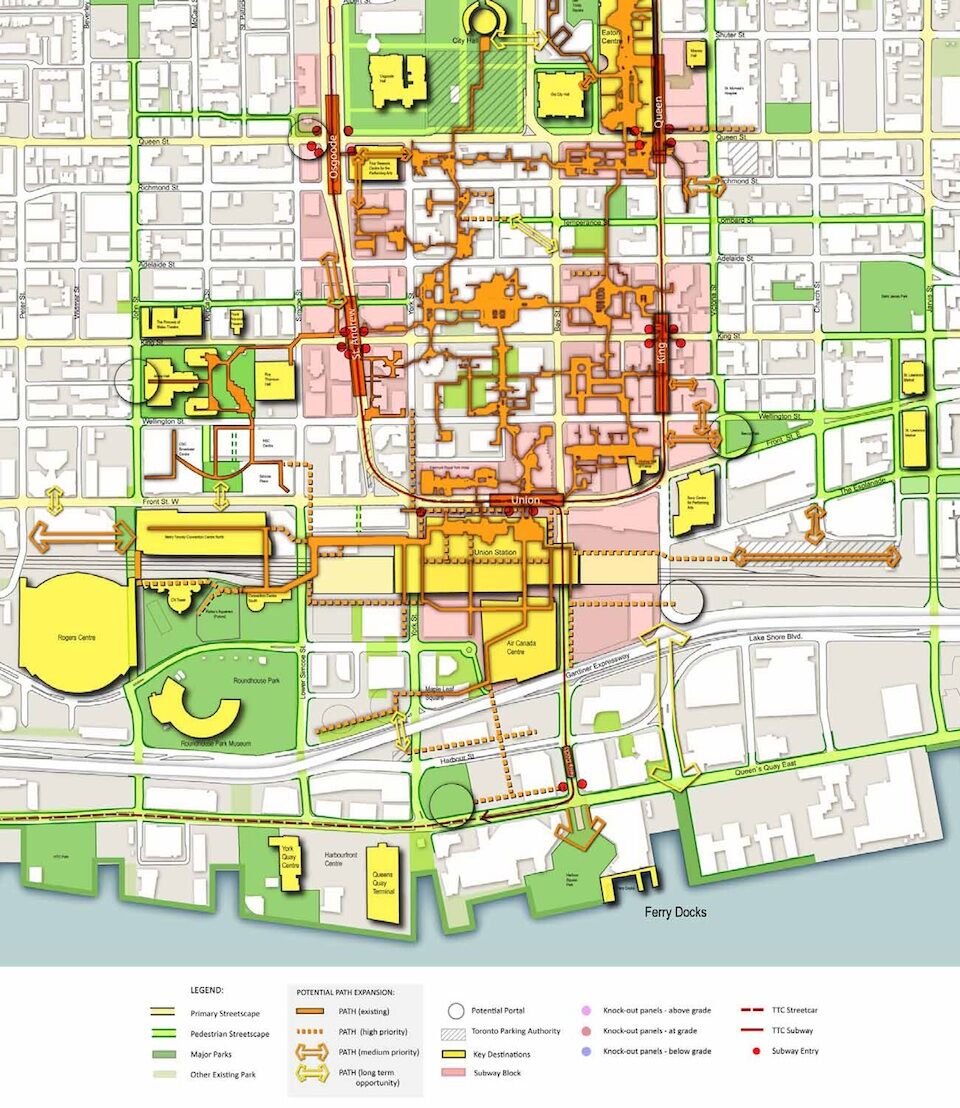AlvinofDiaspar
Moderator
The prospect of walking a few blocks to access the subway, or make a connection between subway lines, is a big change for this city but taken for granted elsewhere. Having only one station serving the University and Yonge sides creates risks. If the Line 1 station is closer, will they walk the additional distance?
I don't know how much risk it'd create necessarily given the rider will do their mental calculation and minimize travel time, transfers and increase comfort for the overall trip - and the Queen/City Hall station is close enough to the core in general. The little J is important (getting the toughest part of the network built), but I'd argue RL really need to be extended north to Eglinton for it to be a draw.
Bringing it back to PATH - from the PATH Master Plan Report:

Any Queen/City Hall station should be plugged into the system quite well. The only issue is the lack of a connection along Bay - but that can be rectified by something akin to the NW PATH extension presumably.
AoD
Last edited:
